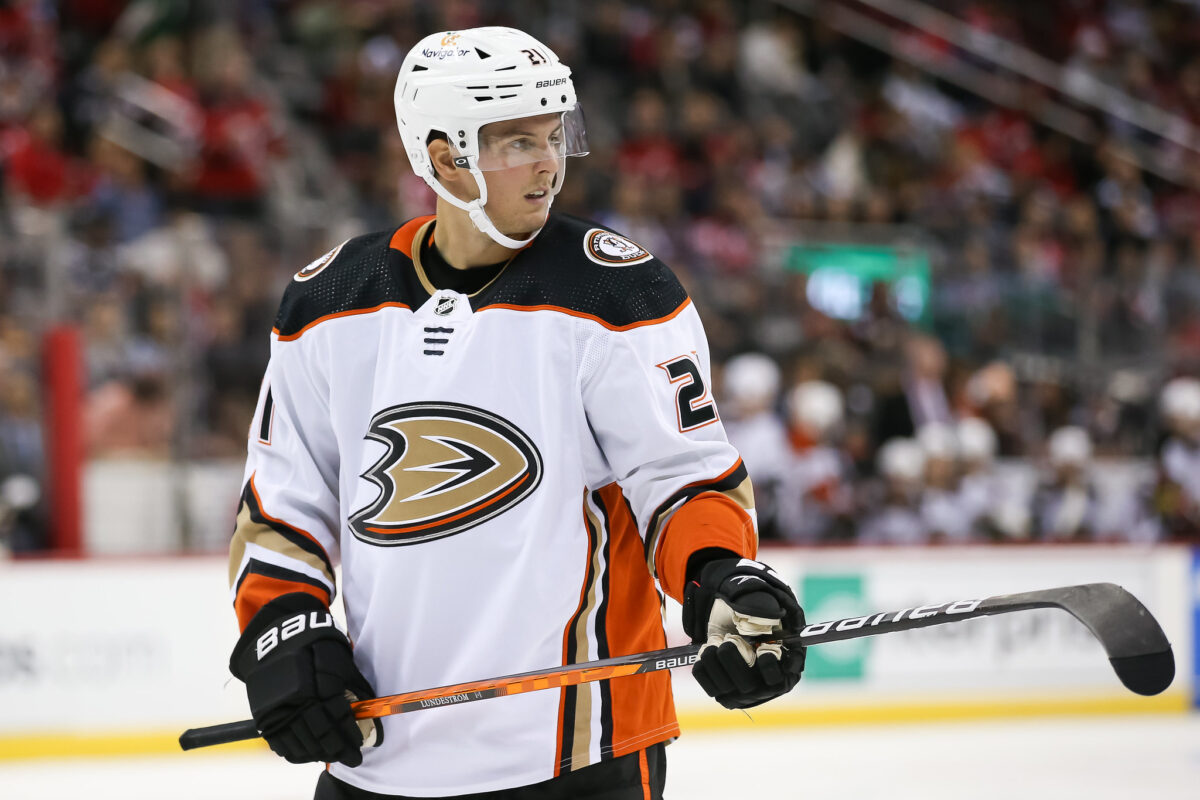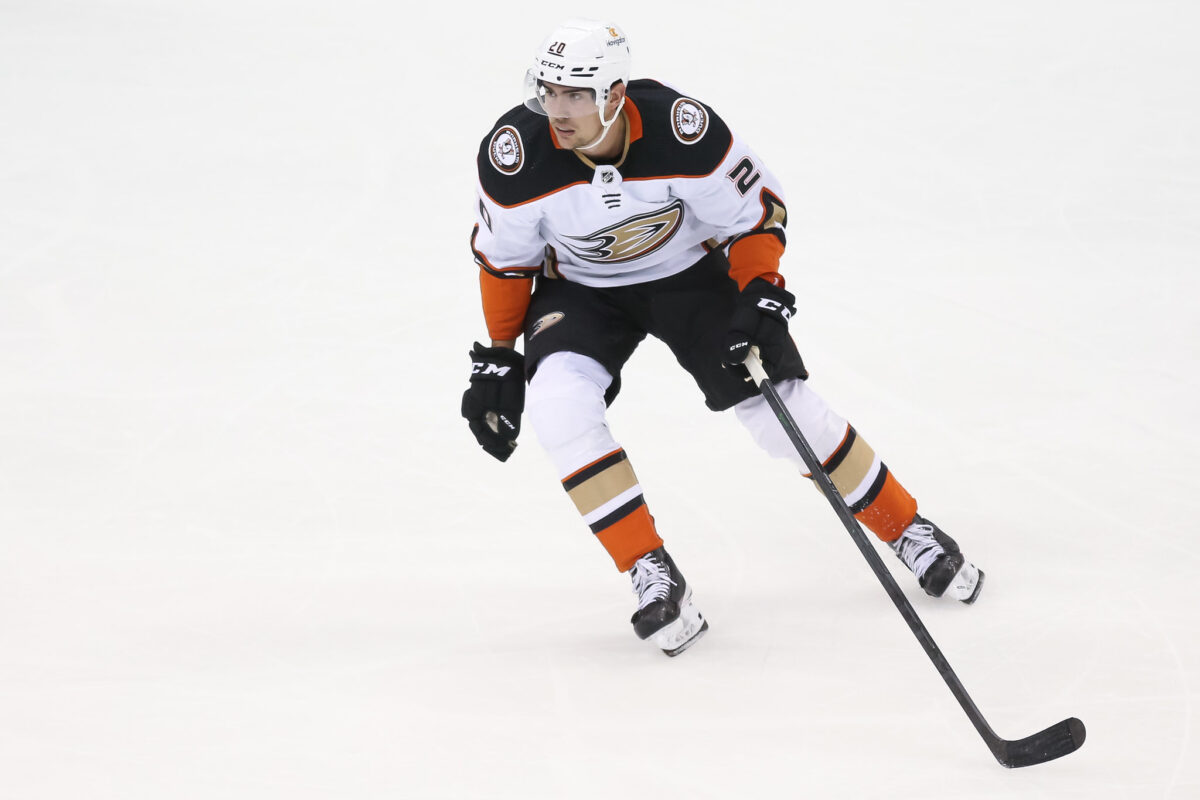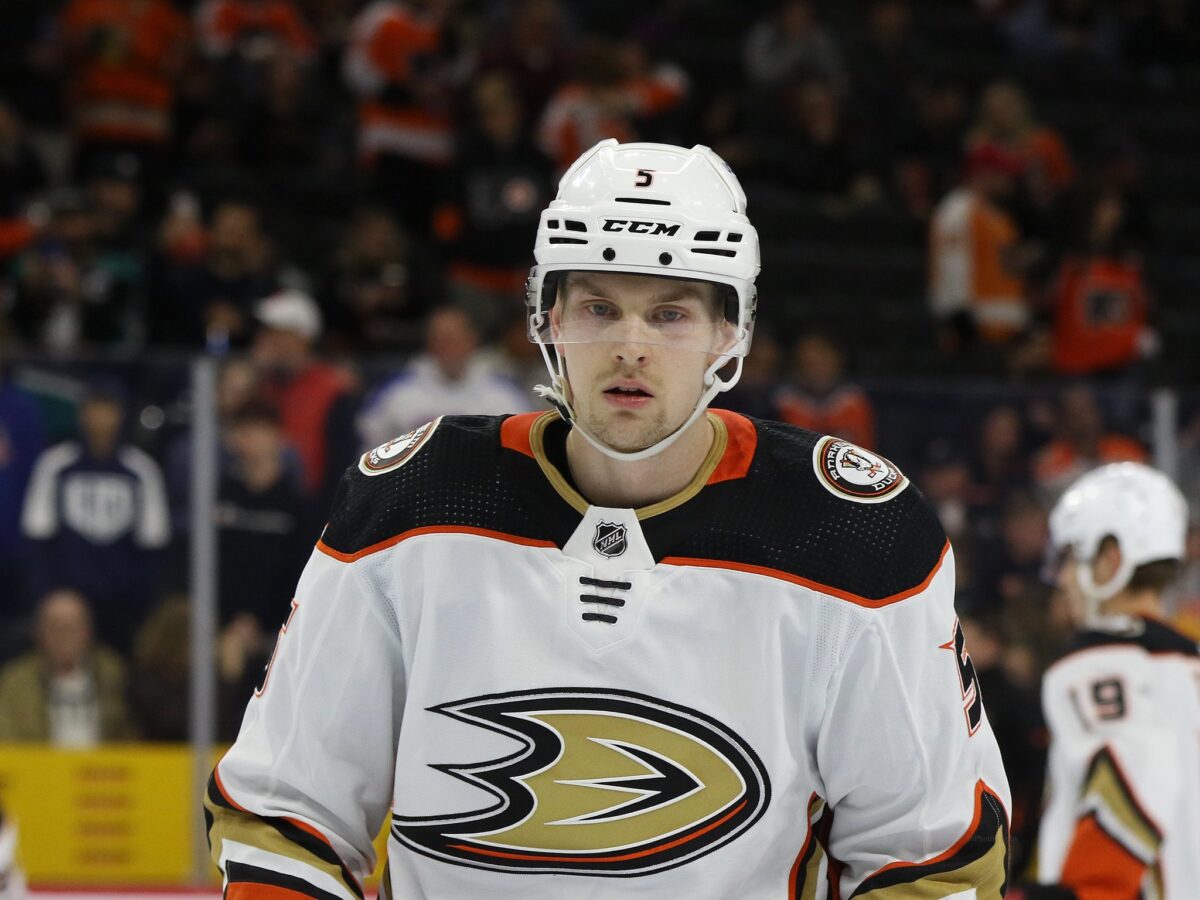As the Anaheim Ducks wind down their final 25 games of the 2023-24 season, all that’s left to play for is pride and Draft Lottery odds. This was another rebuilding season for the Ducks (who sit 20-34-3, seventh in the Pacific Division) as injuries and inconsistencies tested the young roster and extended Anaheim’s playoff drought to a franchise record-extending sixth season.
Related: Ducks Who Won’t Be Back in 2024-25: Unrestricted Free Agents
Before we jump into the 2024-25 season, we should look at the players who need new contracts. Part of the process of a rebuilding team is shedding burdensome contracts and creating cap space for younger, high-end talent and free agency. With 11 contracts set to clear the books in the offseason, the Ducks have about $52 million invested in 2024-25 and will need to spend over $12 million to get to the expected salary cap floor. They’d have roughly $35 million in space before reaching the reported upper limits of the salary cap. Still, that sort of spending would be a drastic pivot from a team currently playing with the second-most cap space in the league.
The next group of free agents are arbitration-eligible restricted free agents. These types of players usually skew younger but are on their second or third deals since their entry-level contracts. Like normal restricted free agents (RFAs), their rights are controlled by the team, but the players can utilize an independent arbiter if they can’t agree on the terms. Arbitration has the potential to turn ugly, but most deals get hammered out before any hearing becomes necessary.
Isac Lundestrom
An offseason Achilles’ injury forced a late start to Isac Lundestrom’s contract year, limiting him to only 22 games so far this season. As the center to the Jakob Silfverberg shutdown line, his defensive numbers look great, but he’s been held to just five points.

Of all the players on an expiring contract, I believe Lundestrom is the most likely to re-sign in Anaheim. The logjam at center isn’t likely to affect his role — Carlsson, Trevor Zegras, and Mason McTavish are top-six forwards, and one will sooner move to the wing than slip into the bottom six. Nathan Gaucher threatens one of the depth center spots, but Lundestrom remains the best defensive-minded third-line option in the organization today. He’s already been through one contract negotiation with general manager Pat Verbeek running the show in Anaheim, and they were able to hammer out a two-year deal before the arbitration meeting. I believe Lundestrom has a high probability of re-signing in Anaheim, but he may not receive a qualifying offer if the Ducks want to build three scoring lines for next season.
Max Jones
Unfortunately, injuries have hampered Max Jones’ development and defined his NHL career so far. The 26-year-old power forward has appeared in 246 games out of a possible 440 in six seasons. When he’s on the ice, he’s recorded 56 points and notched 205 penalty minutes. A first-round pick in the 2016 Entry Draft, Jones was among a group of prospects, including Sam Steel, Max Comtois, and Jacob Larsson that the Ducks were hopeful could carry the team through a soft rebuild. Now into the fifth year of a deliberate rebuild, Jones and Lundestrom are the only two first-round picks from before 2019 still on the roster.
Jones doesn’t have the kind of leverage in arbitration to price himself out of a future in Anaheim, and their prospect pool of wingers is underdeveloped. Jones is a popular player in Anaheim, both on the ice as a hard-nosed player and off the ice as a popular fixture on the team’s social media clips. However, the on-ice results are comparable to Nick Ritchie, another first-round selection by the Ducks whose tenure in Anaheim was defined by taking bad penalties and never meeting his offensive potential. It’s fair to wonder whether the Ducks would get more value out of a Pavol Regenda-type player who could bring a similar level of physicality and marginally higher offensive upside on a cheaper deal.
Brett Leason
It isn’t easy to interpret how the Ducks value Brett Leason. He’s appeared in 98 games over the last two seasons, but he still hasn’t cracked the roster permanently. He seems like the archetype third-line winger on a reasonably-dangerous depth line, but he gets benched in favor of Ross Johnston.

Physicality seems to be the issue with Leason, according to head coach Greg Cronin as Johnston provides an edge Leason doesn’t. His 94 penalty minutes is the third-highest in the league, and only four other players match his eight fighting majors. However, he doesn’t provide anything offensively, as his three points this season add to his career total of 27 points across 178 games. With a 28th-ranked 2.60 goals per game, the Ducks need to find scoring any way they can get it.
Leason drew into the lineup on Sunday (Feb. 25) against the Nashville Predators and got to skate in place of the injured Troy Terry. He had the best game of his Ducks career, recording a goal and an assist playing with McTavish and Frank Vatrano. If he can earn the trust of the coaching staff, Anaheim’s third line will be better with him in the lineup. If the lack of physical play continues, he may be playing for a new team next year.
Benoit-Olivier Groulx
Bo Groulx is yet another depth forward playing on an expiring contract. The 6-foot-2 center is a veteran of 145 games in the American Hockey League. This is his first full season with the big club and has appeared in 32 games. Groulx’s impact is felt more on the defensive end, as he’s recorded only two points.
Like pending unrestricted free agent Sam Carrick, Groulx appears to be victim to a numbers game at center. If the Ducks commit to Lundestrom as the third-line center, the fourth-line pivot will be either Groulx or Gaucher. While Gaucher’s offense has stagnated in his first professional season with the San Diego Gulls, he is nearly four years younger than Groulx, and there’s still at least some hope he’ll be able to produce at the NHL level. This would force Groulx to the left wing behind Zegras, Alex Killorn, and Vatrano, and into direct competition with prospects like Sasha Pastujov, Brayden Tracey, and Regenda. If Groulx is on an NHL roster next season, it doesn’t seem like it will be in Anaheim.
Urho Vaakanainen
Urho Vaakanainen’s pending free agency is another interesting decision. He was an NHL-ready prospect acquired from the Boston Bruins in the Hampus Lindholm trade, and he’s already been extended once by Verbeek. The 25-year-old left-handed defenseman has battled various injuries in his career, but he’s managed to stay healthy for the majority of this season, recording career-highs in games played (48) and points (10). His biggest leap this season has come defensively: His possession metrics, especially alongside Radko Gudas, are the best on the team outside of the Silfverberg line.

Vaakanainen is dealing with the same numbers game other Ducks’ defensemen have to deal with — as a natural lefty, he’s in a crowded room of southpaws that include Pavel Mintyukov, Olen Zellweger, Jackson LaCombe, and Cam Fowler. With Mintyukov, Zellweger, and Fowler already carving out roles in the top four, the real competition is between Vaakanainen and LaCombe. While both have played on their off-hand, they both play at their best alongside Gudas. Both require new contracts, and LaCombe isn’t arbitration-eligible and will be cheaper, but Vaakanainen doesn’t exactly have the leverage to break the bank. If Zellweger receives the call-up to join the Ducks while everyone is healthy, we’ll get to see how everyone is utilized, and we can start to get an idea of how the organization views these players moving forward. If the Ducks don’t qualify Vaakanainen, it’s likely in favor of a veteran either as a seventh defenseman or a bottom-pairing guy to play steady minutes behind Mintyukov and Zellweger.
While none of these RFAs would be too expensive to retain, they’re holding onto roster spots that may need to open up to usher in new talent. It’s unlikely that none of these players receive qualifying offers from the Ducks, but it wouldn’t be shocking if upwards of four of these five players are looking for new teams for the 2024-25 season.
Salary cap data courtesy of CapFriendly. Statistics courtesy of Hockey-Reference. Advanced data courtesy of Natural Stat Trick.
